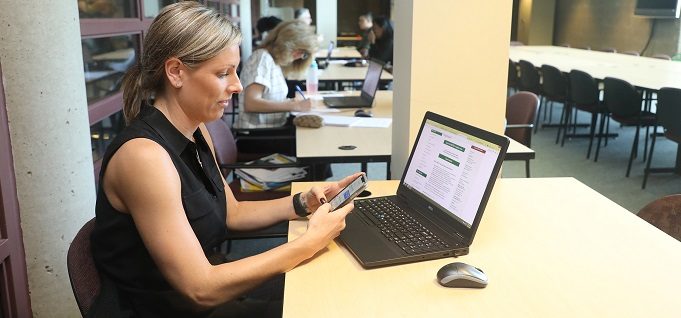Overcoming summer melt
By Ellie Ashford
July 10, 2019
Innovative ways to reach (and retain) students through the summer.
For community colleges trying to retain every student, summer is a precarious season when many high school graduates who plan to enroll in the fall don’t follow through. Current students who take the summer off, often fail to come back, too.
“Summer melt is a perennial issue in the community college environment,” says Sara Enright, vice president of student affairs at the Community College of Rhode Island (CCRI).
According to Education Northwest, some community colleges have attrition rates as high as 40 percent. Another study found that offering high school graduates who intend to go to college two or three hours of additional summer support increased enrollment by 3 percent to 4 percent – and 8 percentage points among low-income students.
Colleges have fought back against summer melt by bringing potential students to campus for small-group workshops, engaging students through personal contacts and sending automatic reminders throughout the summer.
Using text messages
CCRI has shifted its summer outreach efforts away from traditional methods – such as relying on high school guidance counselors and paper mailings – and, like a growing number of community colleges, toward text messages and social media.
“We have to meet students where they are. And for young adults, that is online,” Enright says.
Outreach is more critical than ever – both to recruit new students and hang on to existing ones – as CCRI has seen declines in enrollment for the past six years, Enright says. She points to two factors for the decline: a robust labor market and a declining high school population.
Many high school graduates who have expressed an interest in community college, especially if they would be the first in their family to consider college, are likely to spend their summer working long hours, Enright says. They appreciate text messages from the college as a quick way to remind them about course registration deadlines and the need to complete their financial aid application.
“We make sure to have a positive first connection and give them a sense of purpose and a concrete goal that they are going to be motivated to go after,” Enright says. “Ultimately, it’s about building strong and positive relationships with students.”
More touch points
CCRI uses the Signal Vine app to create automated, targeted texts to certain groups, and staff is trained on how to craft effective messages, says Gregory LaPointe, the college’s executive director of strategic initiatives.
As an example, CCRI just sent a personalized text to 4,000 applicants who haven’t completed their federal student aid application and got back 400 responses with various questions. At this appoint, advisers answer each question individually, Enright says; the next step is using artificial intelligence to respond more quickly.
The college uses geo-fencing to target messages to potential students within a geographic area, such as high school students in certain Providence neighborhoods where the number of incoming CCRI students has declined.
CCRI also uses data to target advertising on Facebook, Instagram and Spotify to certain populations and locations. The college knows if someone clicked on an ad, it can send to that person a text reminder that it’s not too late to register for the fall semester.
“An in-person touchpoint is best,” Enright says, but because “our students are extremely busy,” CCRI started using videos this summer as another way to reach out. The college sends texts telling students “we can’t wait to see you in September” with links to a short video on CCRI’s YouTube channel designed to inspire them to register.
Most students visit the college only one to three times before they enroll, but “with video and other messaging, you have 15 points of contact in the summer,” Enright says.
There’s more to the story! Read the full article in CC Daily.


